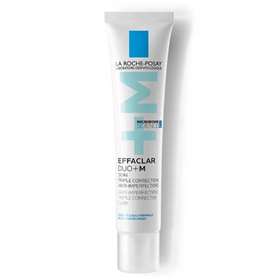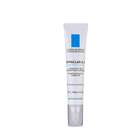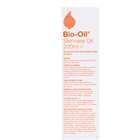Ice pick scars are the small, deep, pitted scars that most of us associated with acne. This is the classic acne scar.
Boxcars scars are similar in appearance to chickenpox scars. They have defined, angular edges and commonly occur on the cheeks and temples.
Rolling scars are wide, shallow scars that have a wave-like appearance .
Hypertrophic scars are raised scars that remain within the boundaries of the original wound. They can reduce in size over time. Hypertrophic scars usually found on the back and chest and are often the result of cystic acne.
What causes acne scars?
Acne scars are caused by inflamed spots or spots that don't heal correctly. The severity of the acne scarring is usually related to the severity of the acne experienced:
- Mild cases of acne often produce pigmented scars, which are not scars at all, but an inflamed red mark left behind as blemish heals. These often fade after twelve months, but they can be more pronounced on people with darker skin.
- Severe cases of acne, such as cystic acne, have a greater chance of leaving scars as the inflammation is often greater and deeper.
As shown in the section above, acne scars are divided into four types: ice pick scars; boxcar scars; rolling scars; and hypertrophic scars.
How do I get rid of acne scars?
Pigmented scars are the easiest type of acne scar to treat as they tend to fade by themselves over time. If you prefer to allow time to take its course and let your pigmented scars heal naturally, you may wish to consider using a corrective foundation to cover up any visible blemishes and smooth out uneven skin tone. If you want to take immediate action,
Dermatix Gel helps fade red scars.
Of the main types of acne scars, hypertrophic are perhaps the easiest to tackle at home. They are raised scars (similar to keloid scars) so they should respond well to a scar and blemish reducing gel, such as Dermatix.
Indented scars (ice pick scars, boxcar scars and rolling scars) are much trickier to treat. Some customers have reported some success with
Bio Oil, but others have seen little improvement. These types of acne scarring can be treated with procedures such as chemical peels, dermabrasion and laser treatments. If you think you require such treatment, you should speak with a doctor or dermatologist.
What is the best acne scar treatment?
There is no product we could single out as the 'best acne scar treatment'. Everyone has different skin and may experience different scarring from acne, plus scars in general are hard to treat fully. We have made a few product suggestions above, but the best treatment for acne scars is perhaps taking preventative action at the beginning and limiting the severity of the condition.
How do I prevent acne scars?
Resisting the urge to squeeze and pick spots will reduce the chances of acne inflammation and infection spreading. Squeezing too aggressively can often push the infection deeper into the skin and make things worse, plus it also spreads spot-causing bacteria across the skin.
Understanding acne and treating the condition early on is the best way to prevent acne scarring. Our
acne vulgaris page has plenty of information and advice on adopting an effecting acne treatment regime.














